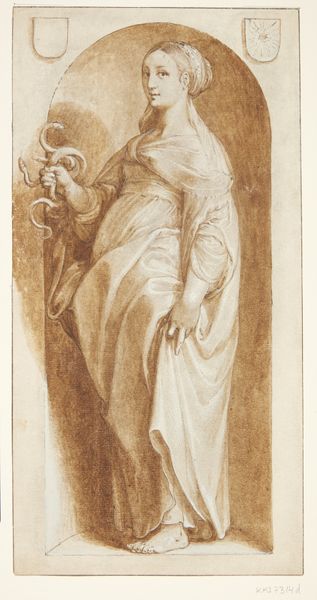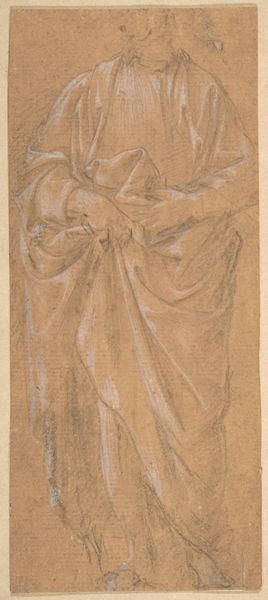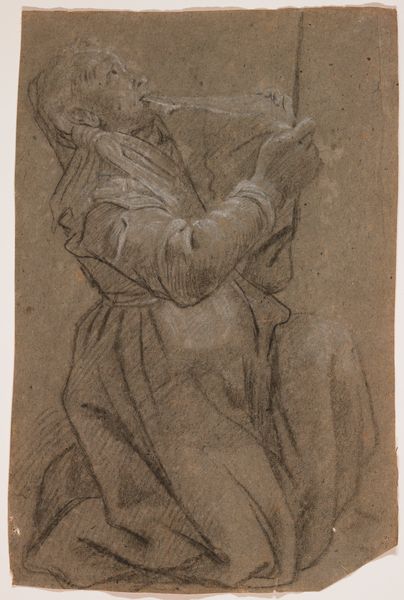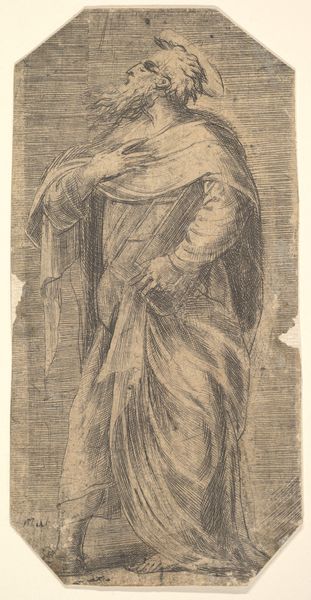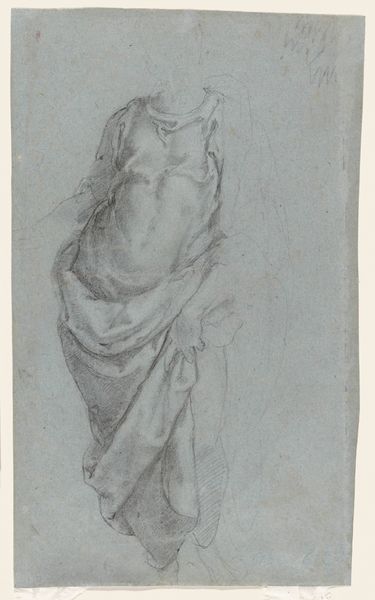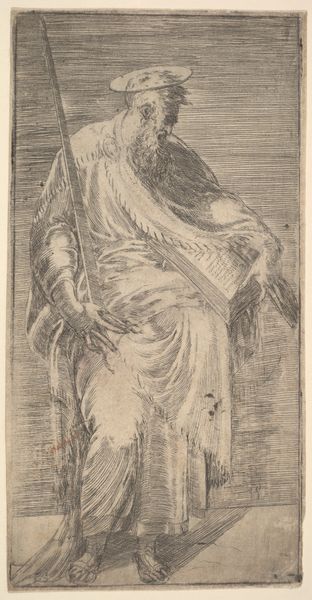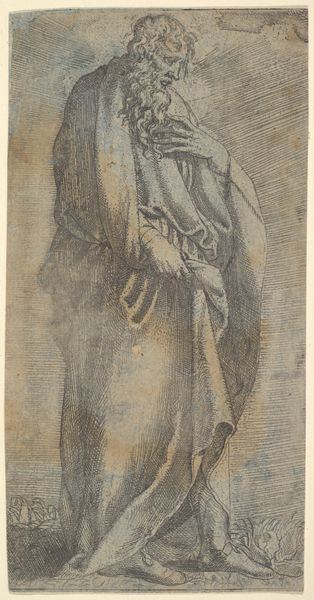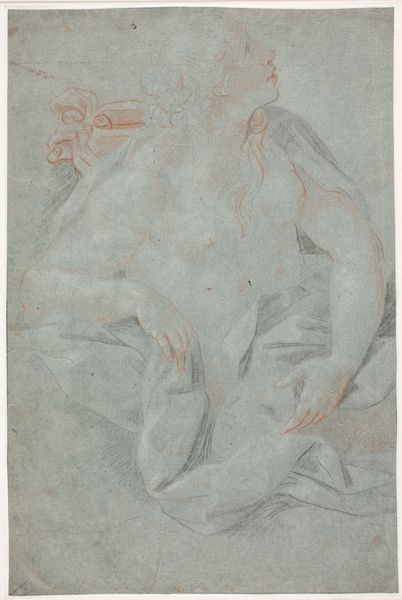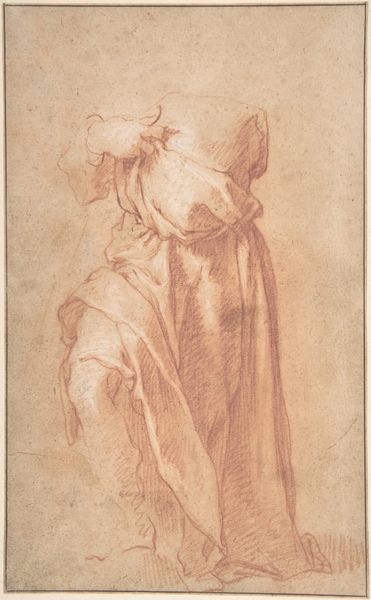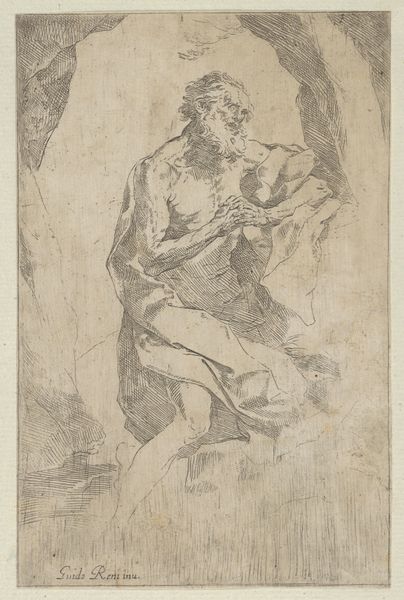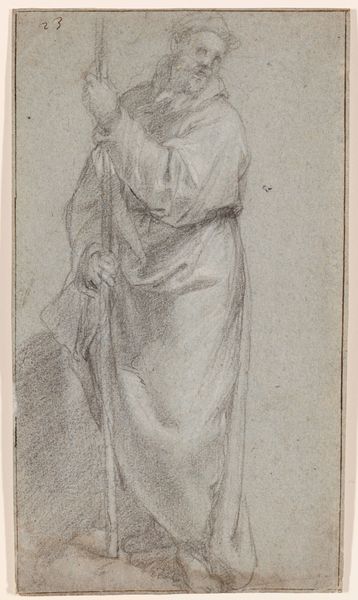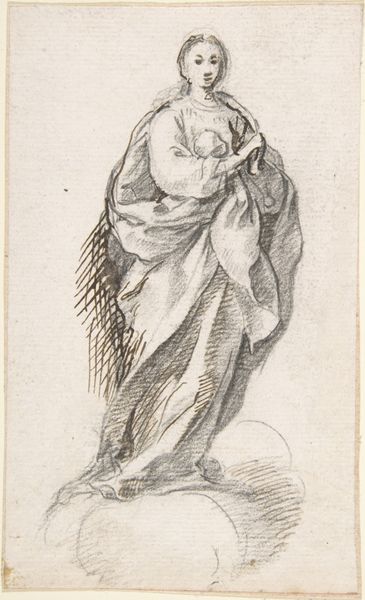
drawing, pencil
portrait
drawing
baroque
pencil drawing
pencil
Dimensions: 285 mm (height) x 193 mm (width) x 288 mm (height) x 195 mm (width) (bladmaal)
Editor: Here we have Willem Panneels' pencil drawing, "Elijah and the Angel. Elijah," created between 1626 and 1630. The starkness of the pencil rendering creates a mood of introspection, don't you think? What is your interpretation of this piece? Curator: Well, considering Panneels's historical context, particularly the strong influence of Rubens and his workshop on artists of the time, one has to think about the institutional forces shaping art. The Baroque period was, of course, hugely impacted by the Church. We can view this drawing through that lens. How does Panneels’ representation of Elijah engage with, or perhaps even subtly critique, the established visual vocabulary for representing holy figures? Editor: So you're suggesting it's not just a portrait but also a commentary on the politics of religious imagery? Curator: Precisely. Think about how artists navigate the expectations and limitations imposed by powerful institutions like the Church, particularly with something as seemingly simple as a drawing. Editor: That gives me a completely different perspective. I was so focused on the individual figure, I completely missed the possible social context of religious artworks. Curator: Art doesn't exist in a vacuum. Reflecting on how social and political elements may influence art is useful. Now, I'm also seeing a different piece. Thank you. Editor: Indeed, and perhaps from now on, when I view a piece of religious art, I might reflect more about power, religion, and the cultural norms.
Comments
No comments
Be the first to comment and join the conversation on the ultimate creative platform.
